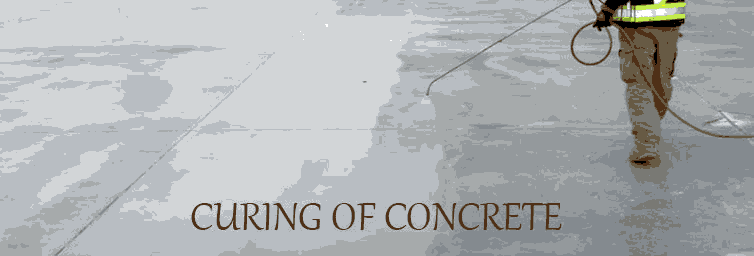You have no items in your shopping cart.
Post Requirement
Curing is a very significant step when pouring concrete and plays an essential role in strength development and durability of concrete.
The concrete increases in strength and decreases in permeability through curing, and it can also minimize cracking, scaling and surface defects.
Briefly, curing is the maintenance of adequate moisture content and temperature in concrete for some time. It takes place immediately after placing and finishing and involves maintenance both at depth and near the surface, for extended periods.
With proper curing, concrete becomes more resistant to stress, abrasion, freezing and thawing and also gain volume stability.
Duration for concrete to cure
Curing time depends on the resulting factors:
- Specified strengths
- Mixture proportions
- Size and Shape of Concrete members
- Ambient climate conditions
- Future exposure conditions
While waiting for concrete to become dry, keep these time frames in mind:
- After the initial set (24 to 48 hours), forms can be removed, and people can walk on the surface
- After partial curing (minimum of 7 days), traffic from vehicles and equipment is allowable.
- After completion of 28 days, the concrete should be fully cured.
Curing Methods and Materials
Concrete can be kept moist at a favourable temperature using these curing methods.
1. Methods that maintain the presence of mixing water in the concrete during the early hardening period and they are:
Ponding and Immersion
Flat surfaces like pavements and floors, concrete can be cured by ponding. It is an ideal method of preventing loss of moisture and also effectual for maintaining a uniform temperature in the concrete.
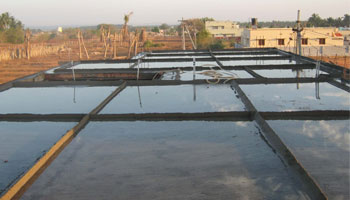
The curing water should not be more than 11°C or 20°F cooler than the concrete. It is to prevent concrete from thermal stresses that result in cracking. This method requires considerable labour and supervision and generally used for small jobs. The immersion method is commonly used in the laboratory for curing concrete test specimens.
Fogging and Sprinkling
Fogging and Sprinkling with water are excellent methods of curing when the ambient temperature is above the freezing level, and the humidity is low. Until the finishing operations are complete, fogging helps to minimize the plastic shrinkage cracking.
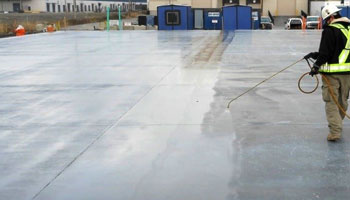
The cost of sprinkling can be a disadvantage as it requires an ample water supply and careful supervision.
Wet Coverings
Wet coverings saturated with water such as burlap, cotton mats, rugs or other moisture-retaining fabrics are used for the curing process. They should always maintain wetness to use after the concrete has hardened enough to prevent surface damage.

The above three methods afford some cooling through evaporation, which is beneficial in hot climatic conditions.
2. Methods that reduce the loss of mixing water from the surface of the concrete and they are:
Impervious Paper
Impervious paper for curing concrete consists of two sheets of Kraft paper cemented together by bituminous adhesive with fibre reinforcement. It is an efficient means of curing horizontal surfaces and structural concrete of relatively simple shapes.
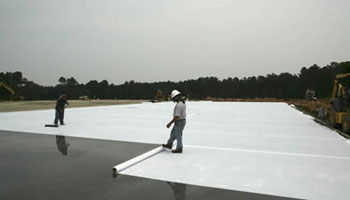
The advantage of using this method is that the periodic addition of water is not necessary and also enhances the hydration of cement by preventing loss of moisture from the concrete.
Plastic Sheets
Plastic sheets materials such as polyethylene film, which is lightweight, effective moisture retarder can be used to cure concrete and also easily applied to both complex and simple shapes.
Membrane-Forming Curing Compounds
Liquid membrane-forming compounds consist of waxes, resins, chlorinated rubber and other materials, that can be used to retard or reduce evaporation of moisture from concrete. They are the most practical and widely used method for curing either freshly placed concrete or concrete after removal of forms.
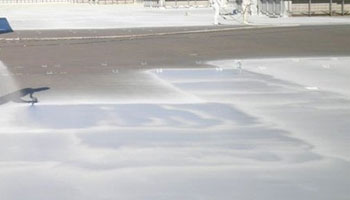
Curing compounds should be consistent and easy to sustain in a thoroughly mixed solution. They should have good-moisture retention properties and should not sag, run-off peaks or collect in grooves.
3. Methods that accelerate strength gain by supplying heat and additional moisture to the concrete and they are:
Live Steam
Live steam is a method of steam curing at atmospheric pressure for enclosed cast-in-place structures and large precast concrete units. The steam temperature in the enclosure should be maintained about 60°C (140°F) until the desired concrete strength has developed.
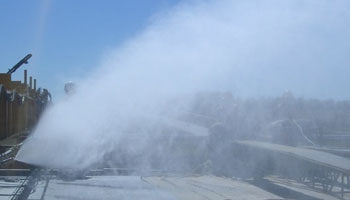
Insulating Blankets or Covers
Layers of dry, porous material can be used to provide insulation against freezing of concrete when the temperature falls below 0-degree Celsius. The insulated blankets are manufactured of fibreglass, sponge rubber, cellulose fibres, mineral wool, and vinyl foam.
Formwork can be economically insulated with a commercial blanket that has a tough moisture-proof covering, and care should be taken to ensure that concrete temperatures do not become excessive.
Electrical heated forms or pads
Electrical heating is especially useful in cold weather concreting where hot oil is circulated through steel forms to heat the concrete. These electrical curing methods are primarily used in the precast concrete industry.
The method or combination of methods depends on the various factors like availability of curing materials, size, shape, age of concrete, aesthetic appearance and economics. The most important aspect of curing is temperature - the concrete should not be too cold or too hot; to prevent from cracking and surface damages.
Also, Read: Ready Mix Concrete - Advantages & Disadvantages
Vani Paspula



